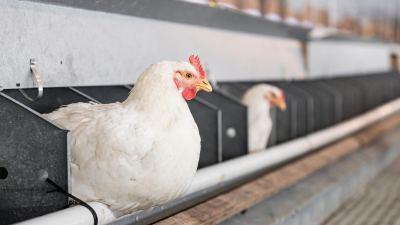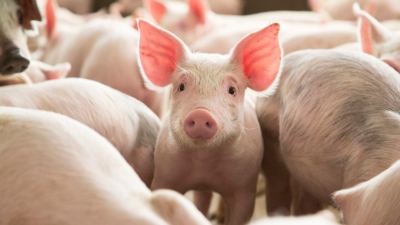Technology on the rise: How the CRISPR craze is shaping the future of our world

Dr. Rodolphe Barrangou and his team are working to explore the many advantages of CRISPR-based technology.
CRISPR (pronounced “crisper”) stands for Clustered Regularly Interspaced Short Palindromic Repeats, which are the hallmark of a bacterial defense system that forms the basis for CRISPR-Cas9 genome-editing technology, according to the Broad Institute. This natural enzyme system has the capability to influence the genetic makeup of our cells and everything around us, which means it also has the potential to revolutionize many different aspects of our lives.
And when Dr. Rodolphe Barrangou, professor in the department of food, bioprocessing and nutrition services at North Carolina State University, took the stage at ONE: The Alltech Ideas Conference 2018 (ONE18), he explained just how impactful this complicated, yet seemingly simple, concept could be.
The CRISPR craze
According to Barrangou, the “CRISPR craze” sums it up; there’s no better way to define what we’re experiencing, particularly because CRISPR technology is influencing industries and even society as a whole.
“CRISPR has shaped my career, not just as a scientist or entrepreneur, but also as a patient, parent [and beyond],” said Barrangou.
CRISPR is present naturally in about half of all bacteria on the planet. It is an immune system that has evolved to recognize viral DNA and cut it. Think of CRISPR as molecular machines that can work as molecular scalpels. And though this innovative, mind-boggling technology may seem like a novel concept, it has actually existed for quite some time.
“CRISPR has been around in bacteria for millennia,” Barrangou said. “The history as a science dates back to 1987, so for over 30 years, scientists have been collecting, analyzing and repurposing CRISPR.”
Would you believe that this very powerful molecular scalpel actually enables scientists to cut any piece of DNA they'd like and perform genome editing for the truly bargain price of only $65? Almost any scientist can use this technology to alter DNA any way they want, very quickly, with unprecedented precision, ease and affordability. Another advantage is the speed at which results can be delivered: you could order a CRISPR report before 3 p.m., for example, and have it in hand by the next morning.
A work in progress
Still, this technology is not without flaws. It’s “imperfect,” said Barrangou, because it has only picked up speed in the last five years. And, like any 5-year-old, it’s “not fully mature yet.” He and his team, along with many other scientists around the world, are working to make CRISPR technology more programmable, affordable, scalable, efficient and precise.
Still, one can’t deny the impressive capabilities of CRISPR.
“We can edit any sequence we want in any organism we want, anywhere we want,” remarked Barrangou. “In the past five years, hundreds of thousands of scientists have used that technology to edit the genomes of every organism you could think of,” he said, in several different industries, including industrial biotechnology, research, therapeutics and agriculture. It’s proving particularly useful in the medical field as researchers examine the ability to alter viruses, genetics, human cells and bacteria. For example, scientists can use CRISPR-based technologies to naturally vaccinate against viruses and bacteria.
Changing agriculture through CRISPR
CRISPR is changing plant and animal breeding, microbial composition, design and engineering. The technology has been used in the dairy industry since 2011, specifically in making yogurt and cheese. Many of these products have been formulated using CRISPR technology, so it’s highly likely that no matter where you’re from in the world, you’ve already consumed a product that was manufactured using CRISPR-enhanced technology.
“Scientifically, the CRISPR craze is unprecedented. We went from nothing to a paper a month, to a paper a week, to a paper a day, to, on average, 10 new CRISPR studies published every day in 2018,” said Barrangou. “That’s crazy. The media cannot write up enough CRISPR stories — as of last night, there are 7.3 million mentions of CRISPR on the web; it makes the cover of magazines almost every week and is covered by media outlets on a regular basis now.”
However, Barrangou’s biggest concern is that we don’t make the same mistake with the public that we did with GMOs. In an effort to engage the public, he and his team are presently making a movie that documents the technology. He notes that, in order to build collective confidence in the science, we must “be very careful and mindful about CRISPR’s stewardship.”
“This big idea is becoming a reality,” he added. “And this big idea is going to save the planet.”















